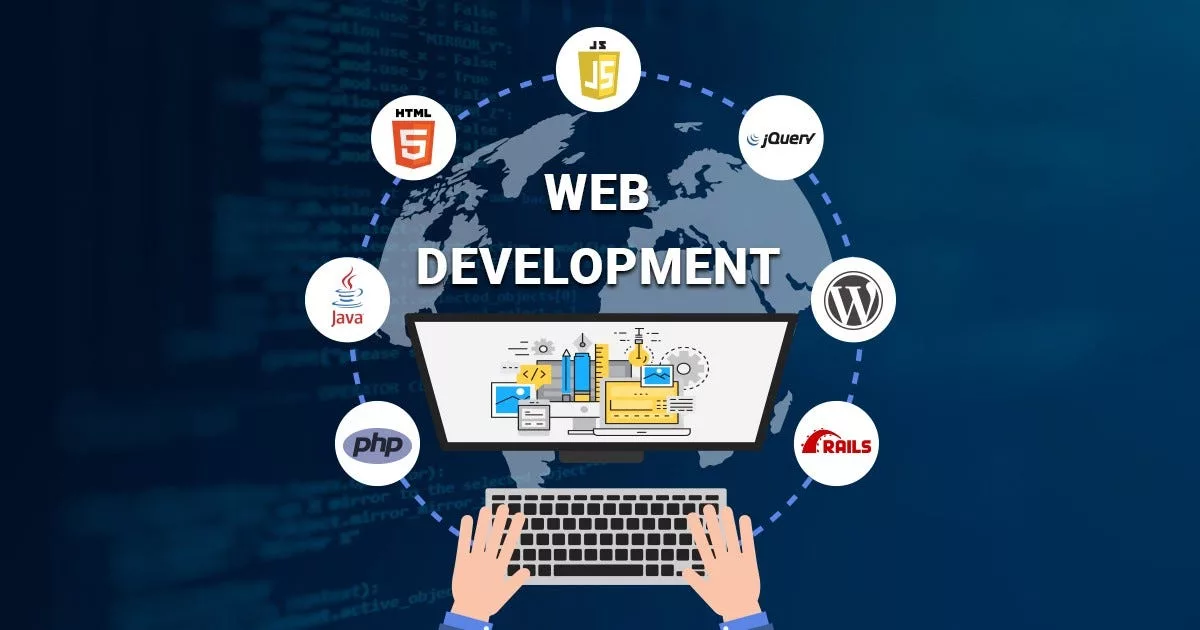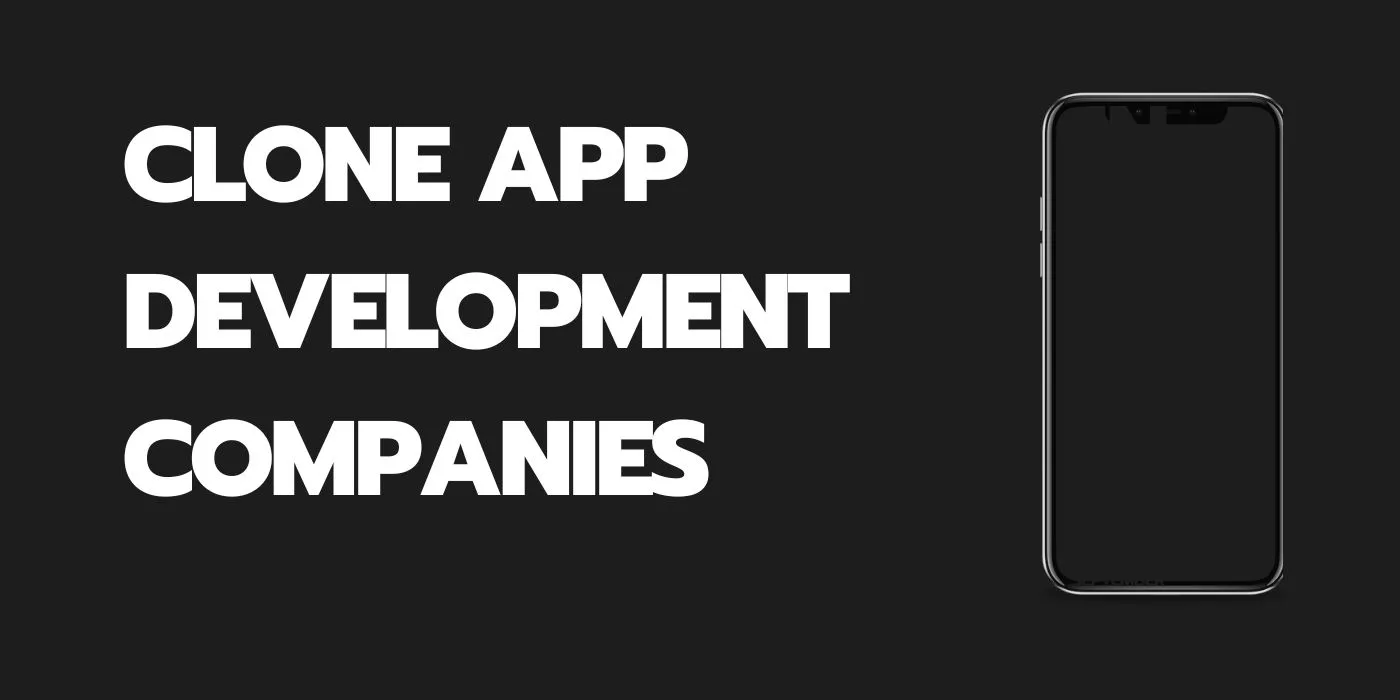Selecting the right platform for your online store is a pivotal decision in the expansive eCommerce landscape. This guide breaks down the crucial choice between Shopify websites and custom websites, offering insights for a well-considered decision that aligns with your business requirements.
When starting an online store, one of the first major decisions you’ll face is choosing between Shopify and a custom-built website. Both options come with distinct advantages and limitations, depending on your business goals, technical expertise, and long-term vision. This section will provide a clear understanding of what each option entails and how they differ in ownership, control, and functionality.
- What is Shopify?
- What is a Custom Website?
- Key Differences in Ownership & Control
- Which One is Right for You?
- Cost Comparison: Upfront and Long-Term Investment
- Scalability and Growth Potential
- Customization, Features, and Flexibility Comparision
- Which One Offers Better Security & Performance?
- SEO, Marketing, and Integrations: Which Platform Drives More Sales?
- Support, Community, and Developer Ecosystem: Which One Offers Better Assistance?
What is Shopify?
Shopify is a cloud-based eCommerce platform that provides businesses with everything they need to launch and manage an online store. It offers:
- A fully hosted solution – No need to worry about web hosting, security, or software updates.
- Subscription-based pricing – Monthly plans range from Basic Shopify to Shopify Plus for enterprise-level needs.
- Pre-built themes and app integrations – Allows for easy customization without coding knowledge.
- Payment processing and built-in checkout – Shopify Payments reduces transaction fees, while third-party gateways are also available.
Essentially, Shopify is a plug-and-play solution designed for ease of use, making it ideal for small to medium-sized businesses, startups, and those who want to launch quickly with minimal technical effort.
Need help choosing the right Shopify developer? Here’s a list of the best Shopify app development firms you can trust.
What is a Custom Website?
A custom website refers to an online store that is either:
- Built from scratch using custom coding, or
- Developed using an open-source platform like WooCommerce, Magento, or OpenCart with tailored modifications.
Unlike Shopify, a custom website requires:
- Hosting and domain management – You choose and maintain your own web hosting provider.
- Web development and design – Either hiring a developer or using a CMS (like WordPress with WooCommerce).
- Security and performance optimization – You handle SSL certificates, backups, and site performance improvements.
- Full customization – No restrictions on site design, checkout experience, or functionality.
This option is best suited for businesses that need unique functionality, complete control, and high scalability. While the upfront investment is higher, it allows for total flexibility in how your online store operates.
Wondering which company fits your needs? Discover our expert-curated list of top Custom app developers.
Key Differences in Ownership & Control
One of the biggest distinctions between Shopify and a custom website is who owns and controls the platform:
| Feature | Shopify | Custom Website |
|---|---|---|
| Hosting | Managed by Shopify | You choose and manage your hosting |
| Ownership | Shopify owns backend infrastructure | Fully owned by you |
| Customization | Limited without custom coding | Unlimited flexibility |
| Security & Updates | Automatic and managed by Shopify | You handle updates, patches, and security |
| Payment Gateways | Shopify Payments (or third-party options with fees) | Any payment processor you choose |
With Shopify, you’re using a hosted solution, meaning you don’t own the backend infrastructure—Shopify does. This makes it convenient but somewhat restrictive, especially for businesses that want full control.
With a custom website, you own everything, giving you full control over features, performance, and scalability. However, it also comes with greater responsibility for maintenance, security, and long-term development.
Which One is Right for You?
- Choose a custom website if you need advanced customization, unique features, and full ownership of your store.
- Choose Shopify if you want an easy, beginner-friendly solution with minimal technical management.
Cost Comparison: Upfront and Long-Term Investment
Cost is one of the most crucial factors when deciding between Shopify and a custom website. While Shopify offers a predictable monthly subscription model, a custom website involves higher upfront costs but can be more cost-effective in the long run. Let’s break down the expenses for each option.
Shopify Costs
Shopify follows a tiered pricing structure, allowing businesses to choose a plan based on their needs. As of 2025, the pricing is:
| Shopify Plan | Monthly Cost | Transaction Fees (if not using Shopify Payments) | Features |
|---|---|---|---|
| Basic Shopify | $39/month | 2.0% per transaction | Essential eCommerce tools |
| Shopify | $105/month | 1.0% per transaction | Professional reporting, better shipping rates |
| Advanced Shopify | $399/month | 0.5% per transaction | Advanced reporting, lower transaction fees |
| Shopify Plus | Starts at $2,300/month | Negotiable | Enterprise-level features, full API access |
Additional Costs on Shopify:
- Themes – Free and paid options ($100 – $400 per theme)
- Apps & Add-ons – Monthly subscriptions for additional features (can range from $10 – $200/month per app)
- Domain Name – $15 – $25 per year if not using Shopify’s subdomain
- Transaction Fees – Additional fees apply if using third-party payment processors (e.g., PayPal, Stripe)
Total cost depends on the plan, apps, and transaction fees, which can add up as your store grows.
Custom Website Costs
Building a custom website involves a larger upfront investment but offers flexibility in cost control over time. Here’s a breakdown of potential expenses:
| Expense | Estimated Cost (One-Time or Recurring) |
|---|---|
| Domain Name | $10 – $25/year |
| Hosting | $5 – $100/month (depends on provider & traffic) |
| Web Development | $2,000 – $50,000+ (varies by complexity) |
| Theme & Design | $0 – $5,000 (if hiring a designer) |
| Plugins & Extensions | $0 – $500 (one-time or recurring) |
| Security & Maintenance | $10 – $200/month (firewall, updates, backups) |
| Transaction Fees | Varies based on chosen payment processor |
For businesses outsourcing development, a basic WooCommerce store may cost $3,000 – $10,000, while a fully custom-coded solution (Magento, Laravel, etc.) can exceed $50,000+ in development costs.
Total Cost of Ownership (TCO) Analysis
When evaluating the long-term costs, consider:
| Cost Factor | Shopify | Custom Website |
|---|---|---|
| Upfront Investment | Low (starts at $39/month) | High (development costs vary) |
| Monthly Fees | Fixed subscription | Hosting + maintenance costs |
| Customization Costs | Apps & themes (recurring fees) | One-time development costs (can be high) |
| Transaction Fees | Shopify Payments (or up to 2% for 3rd-party gateways) | Lower fees with direct payment integration |
| Maintenance & Security | Managed by Shopify | You handle security, updates, and fixes |
- Shopify’s pricing is predictable, but fees scale with growth due to subscription costs and transaction fees.
- Custom websites have higher upfront costs, but you avoid ongoing platform fees, making them more cost-efficient in the long term.
Which One is More Cost-Effective?
- Shopify is ideal for businesses wanting low upfront investment and predictable monthly expenses.
- A custom website is better for businesses that want full control, long-term savings, and no recurring platform fees.
Scalability and Growth Potential
As your business grows, your eCommerce platform must scale to handle increased traffic, product expansion, and evolving customer demands. The scalability of Shopify vs. a custom website depends on factors such as hosting capabilities, customization options, and performance under high demand.
Shopify’s Built-in Scalability
One of Shopify’s biggest advantages is its managed scalability. Since it’s a cloud-based platform, Shopify automatically handles:
- Traffic spikes – No need to upgrade servers or optimize performance manually.
- Automatic software updates – Ensures security and compatibility as your business expands.
- Shopify Plus for enterprise growth – Advanced features for high-revenue businesses.
Growth Challenges with Shopify:
- Customization limits – While apps extend functionality, some advanced modifications require Shopify Plus.
- API and transaction limits – Certain API calls and automation features are restricted unless you upgrade.
- Higher costs with growth – Transaction fees and monthly costs increase as sales grow.
Shopify is best suited for businesses expecting fast growth without wanting to manage technical infrastructure. However, companies with unique operational needs may outgrow Shopify’s limitations.
Scaling with a Custom Website
A custom website offers unlimited growth potential, as it’s not tied to a third-party platform’s limitations. Key benefits include:
- Choice of hosting solutions – Scale resources based on demand (e.g., upgrading from shared hosting to dedicated servers).
- No restrictions on products, orders, or API calls – Unlike Shopify, you won’t hit artificial limits on backend processes.
- Customization at every level – Modify checkout experiences, implement unique data analytics, and integrate with custom CRM or ERP systems.
Growth Challenges with Custom Websites:
- Server management – Requires optimizing hosting performance and security as traffic grows.
- Development effort – Scaling features and infrastructure often require hiring developers.
- Higher initial investment – Although costs stabilize over time, scaling a custom website requires upfront investment in infrastructure.
A custom website is best for businesses that require full control, advanced features, and scalability without platform limitations.
Which One is Better for Scaling?
| Growth Factor | Shopify | Custom Website |
|---|---|---|
| Traffic Handling | Scales automatically | Requires hosting optimization |
| Customization | Limited without Shopify Plus | Unlimited flexibility |
| Transaction & API Limits | Capped on standard plans | No limits |
| Cost at Scale | Monthly fees increase | Costs depend on hosting & development |
| Best for | Businesses wanting hands-off scalability | Businesses needing unique, scalable solutions |
- Choose Shopify if you want effortless scaling and don’t need extensive custom features.
- Choose a custom website if you expect high-volume sales and require advanced customization.
Customization, Features, and Flexibility Comparision
Customization is a key factor when deciding between Shopify and a custom website. While Shopify provides pre-built templates and app integrations, a custom website allows for unrestricted design and functionality. The right choice depends on how much control you need over your store’s features and user experience.
Shopify’s Customization Capabilities
Shopify makes it easy to set up an online store with ready-made templates and an app store for additional functionality.
Pros of Shopify Customization
- Pre-designed themes – Choose from free and premium themes ($100 – $400).
- Shopify Liquid (code-based editing) – Customize themes beyond drag-and-drop features.
- App Store for add-ons – Easily integrate features like email marketing, SEO tools, and automation.
Limitations of Shopify Customization
- Restricted design flexibility – Customizing themes beyond Shopify’s settings requires coding in Liquid (Shopify’s proprietary language).
- Dependence on third-party apps – Many essential features (advanced filters, custom checkout, subscription models) require additional apps with recurring fees.
- Limited backend customization – You can’t fully modify Shopify’s checkout process or database structure unless using Shopify Plus ($2,300+/month).
Best for: Businesses that want a straightforward setup with some design flexibility but don’t need deep backend modifications.
Custom Website’s Flexibility and Features
A custom-built website has no platform restrictions, meaning you can tailor every aspect of the design, checkout flow, and backend functionality.
Pros of Custom Website Customization
- Complete design freedom – Customize every detail of the layout, user interface, and shopping experience.
- Advanced feature integration – Add unique functionalities like custom pricing rules, subscription models, multi-vendor marketplaces, and more.
- No reliance on third-party apps – Unlike Shopify, you don’t need to pay recurring fees for every extra feature.
- Full backend control – Modify checkout, database structure, and site performance without Shopify’s limitations.
Challenges of Custom Websites
- Requires development expertise – You’ll likely need a developer or agency to build and maintain custom features.
- Longer setup time – Unlike Shopify’s instant setup, a custom website takes weeks or months to fully develop.
- Higher upfront costs – Developing custom features can be expensive, though you avoid Shopify’s recurring app fees.
Best for: Businesses needing unique branding, custom checkout flows, or advanced eCommerce functionality.
Which One Offers More Flexibility?
| Feature | Shopify | Custom Website |
|---|---|---|
| Theme Design | Pre-built themes, limited customization | Fully custom designs |
| Checkout Customization | Shopify Plus required for modifications | Full control |
| Backend Customization | Restricted access | Modify anything |
| Third-Party Apps | Necessary for many features | Not required if built-in |
| Best for | Simplicity and quick setup | Unique business needs |
Final Verdict
- Shopify is best if you want an easy, pre-built design with moderate customization options.
- A custom website is better if you need deep customization, advanced features, and long-term flexibility.
Which One Offers Better Security & Performance?
Security and performance are critical for eCommerce success, affecting everything from customer trust to search engine rankings. Shopify provides built-in security and automatic performance optimizations, while a custom website offers greater control but requires hands-on management. Here’s how they compare:
| Factor | Shopify | Custom Website |
|---|---|---|
| Performance Management | Shopify handles everything | You manage hosting and speed optimizations |
| Security Features | Built-in SSL, fraud prevention, and PCI compliance | Custom security configurations possible |
| Uptime & Server Reliability | High uptime (Shopify’s responsibility) | Depends on hosting provider |
| Scalability & Traffic Handling | Automatic scaling | Requires hosting upgrades as traffic grows |
| Best for | Hassle-free security & reliability | Businesses with unique security or compliance needs |
SEO, Marketing, and Integrations: Which Platform Drives More Sales?
Your website’s SEO and marketing capabilities determine how easily customers find and engage with your store. Shopify offers built-in SEO tools and a marketplace of marketing apps, while a custom website allows for advanced SEO strategies and full marketing control. Here’s a breakdown of their differences:
| Factor | Shopify | Custom Website |
|---|---|---|
| SEO Capabilities | Basic SEO tools, auto-generated URLs, limited structure customization | Full control over URL structure, meta data, and advanced SEO techniques |
| Blogging Features | Built-in blog but lacks flexibility | Advanced blogging capabilities (e.g., WordPress) |
| Marketing Automation | Shopify Email, built-in discount codes, basic automation tools | Full integration with marketing platforms (HubSpot, Mailchimp, etc.) |
| Third-Party Integrations | Shopify App Store for additional tools (many require monthly fees) | Custom API integrations with CRMs, ERPs, and analytics platforms |
| Advertising & Retargeting | Easy integrations with Facebook, Google Ads, and TikTok | No platform restrictions; customizable ad tracking & retargeting |
| Best for | Simple SEO and marketing tools without deep customization | Businesses needing advanced SEO, full marketing control, and deeper integrations |
Support, Community, and Developer Ecosystem: Which One Offers Better Assistance?
When technical issues arise, having reliable support and a strong developer community is essential. Shopify provides 24/7 customer support, while a custom website relies on open-source communities, hosting providers, and developers for assistance. Here’s how their support ecosystems compare:
| Factor | Shopify | Custom Website |
|---|---|---|
| Customer Support | 24/7 live chat, email, and phone support | No dedicated support; depends on hosting provider and developers |
| Developer Community | Large network of Shopify Experts for hire | Vast open-source communities (WordPress, WooCommerce, Magento) |
| Learning Curve | Beginner-friendly with guided setup | Requires technical knowledge or hiring developers |
| Platform Updates & Maintenance | Automatically handled by Shopify | Requires manual updates and maintenance |
| Troubleshooting & Fixes | Shopify support assists with platform-related issues | Requires technical expertise or developer assistance |
| Best for | Businesses wanting hands-on support and ease of use | Businesses with in-house developers or custom platform needs |
Final Thoughts
Choosing between Shopify and a custom website depends on your business goals, technical expertise, and long-term vision. Shopify offers a quick, user-friendly, and scalable solution for businesses looking to launch and grow without managing technical complexities. However, as your business expands, the monthly costs, transaction fees, and customization limitations may become restrictive. On the other hand, a custom website provides complete control, allowing for unlimited customization, lower long-term costs, and full ownership of your eCommerce platform. The trade-off is a higher upfront investment and the need for ongoing maintenance and security management.
If you’re launching a new or small business, Shopify’s simplicity and support may be the best choice. However, if you plan for long-term growth, advanced features, or unique branding needs, investing in a custom website could be the smarter move. Ultimately, the right choice is the one that aligns with your business’s growth strategy, budget, and operational preferences.










Leave a Reply